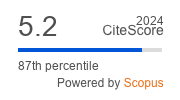Article | Open Access
Globalization and Modern Slavery
| Views: | 24363 | | | Downloads: | 22011 |
Abstract: This article presents a cross-national comparative analysis of the relationship between different dimensions of globalization and modern slavery. It argues that both the economic and political dimensions of globalization are strongly associated with lower levels of slavery prevalence. Recent estimates suggest there are more than 40 million people in some form of slavery and the United Nations has committed the world to ending this problem by 2030. Some argue that a race to the bottom, and the structure of economic incentives associated with globalization have contributed to the problem of modern slavery. Others argue that increased openness and the diffusion of values, the spread of democratic forms of rule, and the advance of human rights that come with globalization limit modern slavery. This article presents a preliminary empirical analysis of these arguments using data on slavery prevalence across more than 60 countries and various measures of economic and political globalization. The analysis shows that economic measures of globalization and higher levels of democracy are significantly related to lower levels of slavery prevalence, even after controlling for armed conflict and regional differentiation. In order to support these findings, the article examines the international law on slavery, definitions and conceptions of modern slavery, and comparative data on slavery prevalence modeled across indicators of economic and political globalization. It concludes with a discussion of the implications of these findings for the trade-offs between globalization and modern slavery.
Keywords: armed conflict; economic development; forced labour; globalization; human rights; modern slavery; worker rights protection
Supplementary Files:
Published:
Issue:
Vol 7, No 4 (2019): Trade-Offs in the Political Realm: How Important Are Trade-Offs in Politics?
© Todd Landman, Bernard W. Silverman. This is an open access article distributed under the terms of the Creative Commons Attribution 4.0 license (http://creativecommons.org/licenses/by/4.0), which permits any use, distribution, and reproduction of the work without further permission provided the original author(s) and source are credited.


